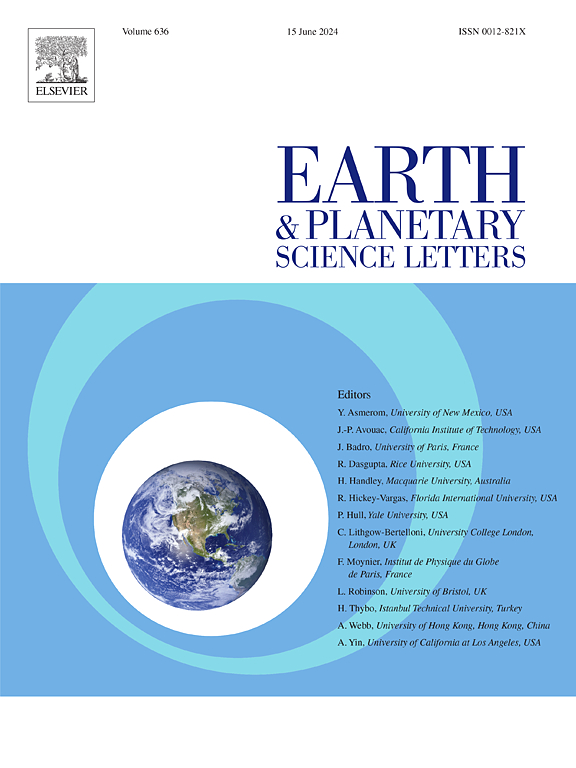Coupling magma ascent models with volatile diffusion chronometry
IF 4.8
1区 地球科学
Q1 GEOCHEMISTRY & GEOPHYSICS
引用次数: 0
Abstract
The pre- and syn-eruptive magma decompression rate is recognized as a key parameter modulating eruption dynamics, with explosive eruptions being generally associated with much larger decompression rates than effusive ones. Magma decompression rates cannot be directly measured and thus are typically inferred from petrological, geochemical, numerical modelling, and seismic data. Most studies use petrological information of volatile element diffusive equilibration in glass and crystals to infer a single value for the magma ascent rate for a given eruption, even though numerical volcano conduit simulations show that changes of velocity are expected during magma ascent. Here we integrate magma ascent conduit models with diffusion chronometry of volatiles in melt embayments and phenocrysts to obtain a more comprehensive understanding of magma ascent rates. We find that incorporating a more realistic boundary condition that depends on the magma ascent path with variable velocities gives time estimates that can be up to a factor of 7 longer than from the standard assumption of constant magma ascent rate. Therefore, previous magma ascent rates from diffusion chronometry of volatiles in crystals and melts with a fixed boundary condition may be significantly overestimated. Overall, we show that coupling of magma ascent models with diffusion chronometry can provide more robust inferences of magma ascent and thus improve the understanding of the role of this parameter into the explosive and effusive eruption controls.
将岩浆上升模型与挥发性扩散计时法结合起来
爆发前和同步爆发的岩浆减压率被认为是调节喷发动力学的一个关键参数,爆炸性喷发的减压率通常比喷出性喷发大得多。岩浆减压率无法直接测量,因此通常通过岩石学、地球化学、数值模拟和地震数据来推断。大多数研究使用玻璃和晶体中挥发性元素扩散平衡的岩石学信息来推断特定喷发的岩浆上升速率的单一值,尽管火山导管数值模拟显示岩浆上升过程中速度会发生变化。在这里,我们将岩浆上升导管模型与熔体内湾和表晶中的挥发物扩散计时法结合起来,以获得对岩浆上升速率更全面的了解。我们发现,根据岩浆上升路径的不同速度,结合更现实的边界条件,得出的时间估计值比岩浆上升速率恒定的标准假设最多可延长 7 倍。因此,以前根据晶体和熔体中挥发物的扩散时间测定法得出的岩浆上升速率在边界条件固定的情况下可能会被大大高估。总之,我们的研究表明,将岩浆上升模型与扩散计时法结合起来,可以提供更可靠的岩浆上升推断,从而提高人们对这一参数在爆炸和喷发控制中的作用的认识。
本文章由计算机程序翻译,如有差异,请以英文原文为准。
求助全文
约1分钟内获得全文
求助全文
来源期刊

Earth and Planetary Science Letters
地学-地球化学与地球物理
CiteScore
10.30
自引率
5.70%
发文量
475
审稿时长
2.8 months
期刊介绍:
Earth and Planetary Science Letters (EPSL) is a leading journal for researchers across the entire Earth and planetary sciences community. It publishes concise, exciting, high-impact articles ("Letters") of broad interest. Its focus is on physical and chemical processes, the evolution and general properties of the Earth and planets - from their deep interiors to their atmospheres. EPSL also includes a Frontiers section, featuring invited high-profile synthesis articles by leading experts on timely topics to bring cutting-edge research to the wider community.
 求助内容:
求助内容: 应助结果提醒方式:
应助结果提醒方式:


